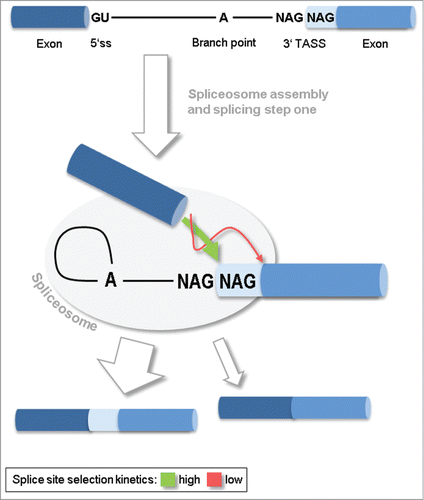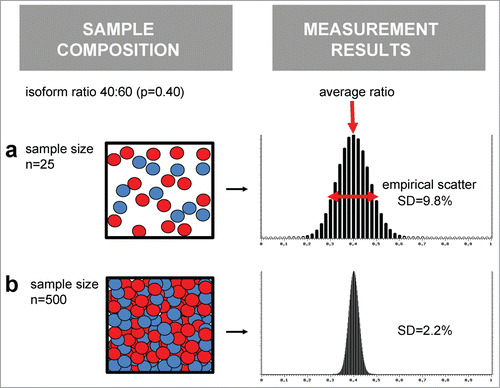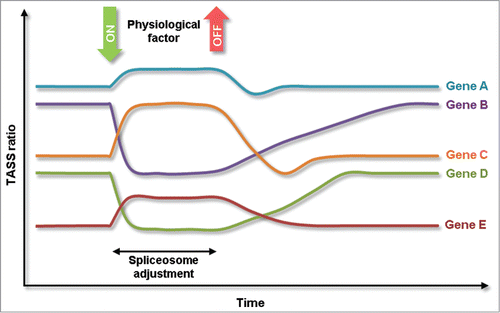Figures & data
Figure 1. Model of tandem alternative splice sites (TASS) selection and splicing outcome. Splicing at TASS essentially takes place after the assembly of the enzymatic spliceosome complex and splicing step I, and precedes splicing step II. The first NAG sequence is preferably taken as the 3' splice site. An alternative NAG located further downstream may compete, but is kinetically disfavored.

Figure 2. Sample size impacts on the reliability of isoform ratio measurements. Molecules of 2 isoform species (blue and red balls) exist in a given ratio, here 40:60%. Imagine that repeated isoform measurements are performed multiple times, using either a small sample size (row a, n = 30 molecules) or larger ample size (row b, n = 500 molecules). On average, the measured isoform ratio will reflect the real situation. But, the scatter of measurement results is significantly affected by the sample size.

Figure 3. Model of physiologically triggered, concerted shift in alternative splicing (PCAS). PCAS functions through a basic decision rule on TASS splicing at multiple genes simultaneously. Nevertheless, changes in TASS ratios retain individual characteristics with respect to response magnitude and response times.

